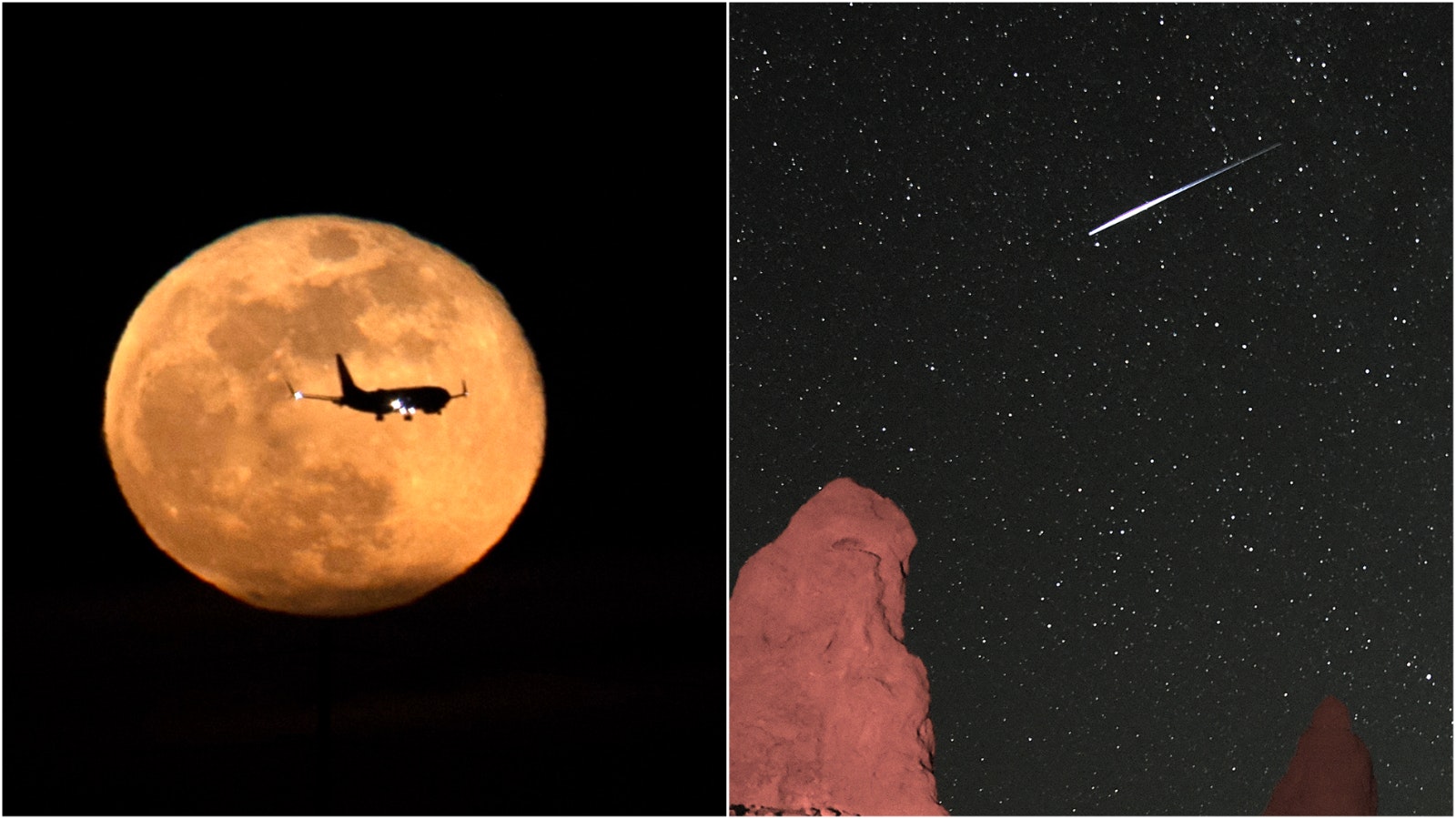By Clair McFarland, Cowboy State Daily
clair@cowboystatedaily.com
The earth is burning debris into sparkling light-bursts as it coasts through an ancient pathway this week.
But sky gazers will have to get strategic to watch this year’s Perseid meteor shower, as light from Thursday night’s supermoon could drown out the meteors’ sparks.
Meteor showers occur when the earth travels through a field of debris, and some of the debris burns up against our atmosphere.
This week’s shower, the warm-weather Perseid shower visible in late summer every year, consists of tiny fragments of a comet that loops around the sun every few centuries, according to Max Gilbraith, planetarium coordinator for the University of Wyoming.
“So the earth just passes through the ancient trail of that comet,” said Gilbraith, adding that the debris doesn’t look like debris when it bursts into flames roughly the size of rice under the umbrella of the night sky. “It’s like this nice, steady stream of cool shooting stars, kind of wisping through.”
Thursday night is also a supermoon. That is, a full moon occurring while the moon is at a point very close to the earth in its elliptical orbit. The moon’s closest points are called perigees; its farthest points are called apogees.
The moon is about 224,000 miles from the earth now, according to timeanddate.com. Its farthest separation from the earth so far this year was on June 29, when it was nearly 253,000 miles away.
“You’ll definitely get to see the supermoon,” said Gilbraith. “The meteor shower is a little harder – because of the supermoon.”
The supermoon’s amplified rays can drown out the meteors’ smaller bursts, he said. City lights can have the same effect.
The best strategy for viewing the Perseid meteor shower is to leave the city and find a mountain to the west of oneself. That way, when the moon begins its descent at around 4 a.m., the mountain will block its light early and the Perseids can reign the skies.
Gilbraith said the Perseid meteor shower isn’t known for large debris as some other events are, and he doesn’t expect anyone to see “rare” fireball meteors that could survive the atmosphere and hit earth.
“Those are very, very rare,” said Gilbraith. “They can make noise and even dangerous amts of sonic blasts, but that’s something that only happens once a decade: where you get a fireball that could damage property.”
Thunderstorms, Moonlight
There may be clouds in the evening, but in the best viewing hours, between 10 p.m. and 2 a.m., the moon will be a bigger problem than the clouds, according to meteorologist Don Day.
Day said Thursday night and “the next couple of nights” there is going to be an increase in afternoon and evening thunderstorms – which is something of which campers should be aware as well.
But the clouds should dissipate as night draws on to midnight, said Day.
“The moon is probably going to be a bigger problem than the clouds,” he said, adding that the Perseid’s peak viewing time is Friday night. And the moon will still be bright then.
Day also noted that the Perseid meteors are best viewed near the constellation Cassiopeia, which gazers can find by looking above the horizon to the northeast, just right of the Big Dipper. That’s a good thing, he added, as the moon is rising in the east and setting in the west.
The Perseid is a great opportunity to watch the earth’s protective atmosphere in action, said Day, because it’s a reliable, warm-weather meteor shower.
“A lot of the meteor showers we get are during the colder seasons,” he said. “Times when you go out for five minutes and say ‘OK, I’m done.’”





